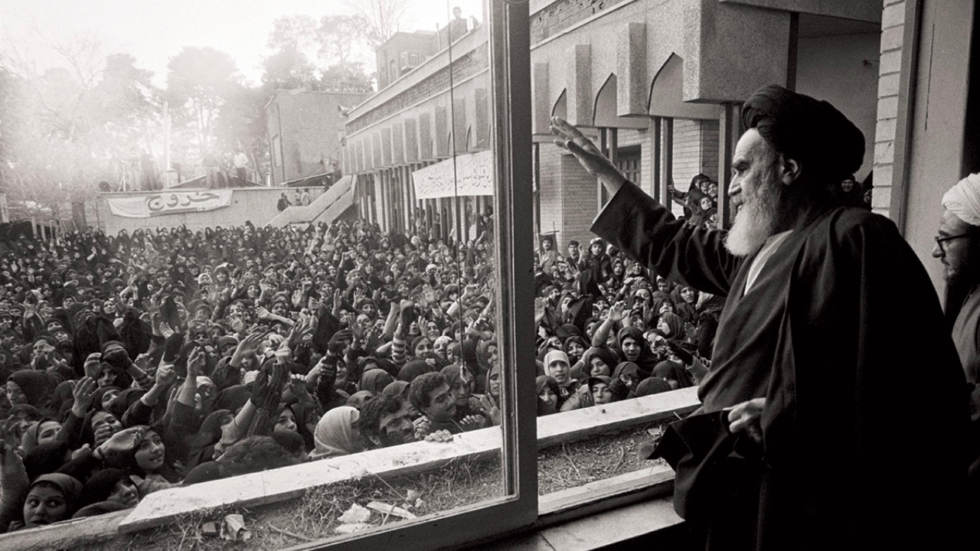A Glimpse into the Life of Imam Khomeini 34 Years After his Demise

Sayyid Ruhullah Musawi Khomeini, commonly known as Imam Khomeini, was a man whose revolutionary stance in the face of tyranny is still contemplated over 30 years after his demise. While millions revere him until this very day, he is often labeled a staunch cleric by mainstream accounts and by the Western world. Despite the varying opinions surrounding his legacy, it cannot be denied that this one man shook the entire world.
Imam Khomeini was born on September 24th, 1902, in the town of Khomein, Iran. He hailed from a religious family and was a descendent of the Prophet Muhammad through the Shiite Imam Musa al-Kadhim. He was raised by his mother and aunt following his father’s murder while he was an infant. From the tender age of six, he began studying the Holy Qur’an and received his early education at home and at a local school.
In 1921, Imam Khomeini enrolled in a renowned Islamic seminary in Arak, an institution famous for its scholastic brilliance.The following year, he accepted an invitation to study at the Dar al-Shafa school in Qom before his exile to the city of Najaf in neighboring Iraq. In the years following his graduation, he became renowned for his teachings in Islamic jurisprudence, philosophy and mysticism, and the numerous books he wrote. In 1963, Imam Khomeini ascended to the grand status of Marja,’ a title given to the highest level of a Twelver Shia religious cleric.
Above all, what hailed him as a hero for Iranians and Shiite people worldwide was his stance against the Pahlavi dictatorship in Iran. Imam Khomeini led a movement against the Shah’s corrupt regime and guided the masses with his exceptional oratory and leadership skills.
During one of his iconic speeches at the Feyziyeh School in Qom on the day of Ashura, he boldly denounced Mohammad Reza Pahlavi’s vile intentions of removing traces of Islam and religious scholarship from Iranian society.
Unbeknownst to many, the Shah’s regime implemented policies that were destructive to Iran’s national sovereignty. In January 1963, the Shah announced a six-point program of economic, social and political reform known as the White Revolution, which was “an American-inspired package of measures designed to give his regime a liberal and progressive facade.’’ The motives behind these proposed changes were considered detrimental, as Imam Khomeini foresaw them as a Western plot for exerting dominance over the Iranian people.
Imam Khomeini called for a meeting with his colleagues, where he stressed the importance of opposing the Shah’s plans. He prompted the senior Maraji’of Qom to issue a boycott of the referendum that the Shah had planned to secure the appearance of popular approval for the White Revolution.
Imam Khomeini ventured on with his denunciation of the Shah’s agendas and issued a manifesto signed by eight other senior scholars. The Manifesto revealed the Shah’s violations of the constitution. It also accused him of submitting to American and Israeli interests, demonstrating how moral corruption had spread throughout the country.
Upon Imam Khomeini’s public denunciation of the Shah as a “wretched miserable man,” he was imprisoned on June 5, 1963. Following his arrest, three days of riots erupted, where nearly 400 men were killed.
A few months later, Imam Khomeini delivered yet another powerful speech condemning the Shah’s all-time avid supporter, the United States of America:
“Let the world know that all the troubles that the Iranian nation and the Muslim nations have are from the U.S.,” he declared. “The Islamic nations hate imperialism in general and the U.S. in particular…It is the U.S. that empowers Israel to make Muslim Arabs homeless.”
Imam Khomeini was arrested again. This time he was flown to Ankara, Turkey, on a military aircraft and then exiled to Iraq, where he was later forced to leave by then-Vice President Saddam Hussein. Thereafter, Imam Khomeini was taken to France where he remained in exile for the next 14 years.
While in Najaf, Iraq, Imam Khomeini formed a unique concept of Islamic governance, also known as Hukumat-e-Islami, which he delivered in the form of lectures at the seminary in 1971. He also refined the concept of Wilayat e Faqih, or ‘guardianship by a jurist,’ which was based on the necessity of a political authority whose leadership was rooted in Islamic law. During exile, Imam Khomeini never lost connection with revolutionary supporters back in Iran and would continue to lead them from afar.
On January 16, 1979, the Shah fled Iran in what sparked his ultimate downfall. Two weeks prior to his departure, the Shah had appointed Shapour Bakhtiar as prime minister and commanded him to form a government—one that was destined to fail—as the Islamic Revolution was gaining fervor.
With the Shah’s departure, Imam Khomeini returned to Iran on February 1, 1979. Just days later, he formed a provisional Islamic government, asking all Iranian men and women above the age of 16 to vote for a referendum to ratify the new government and constitution. Following an overwhelming voter turnout, 98% of the Iranian people demanded the establishment of an Islamic Republic, with Islam as the guiding principle of their constitution.
During his leadership, Imam Khomeini sought to unite Muslims by famously coining a ‘Unity Week’ to celebrate the birth of the Holy Prophet Muhammad as a way to reconcile the two dates attributed to his birth day in Sunni and Shia sources. He also dedicated the last Friday of the month of Ramadan as the International Day of Quds, a day where Muslims across the globe peacefully protest against Israel’s occupation of Palestine.
Imam Khomeini was particularly vocal about assuring that religious minorities were accepted in Iran, and he issued a ruling commanding people to treat Jews and other religious minorities with utmost respect. In fact, Imam Khomeini made certain that several seats were reserved for minority religions in government circles.
On June 3, 1989 at the age of 89, Imam Khomeini fatally succumbed to cancer. Over 10 million people attended his funeral, which ranks as one of the largest public gatherings in history.
Above all else, Imam Khomeini’s legacy revolved around the attainment of self-reliance and national sovereignty in Iran. He envisioned Islamic nations coming together as a single, unified power—a vision which is gradually prevailing in the modern day. Today, Imam Khomeini’s legacy prevails in Iran and continues to resonate within freedom-seekers worldwide.
If you value our journalism…
TMJ News is committed to remaining an independent, reader-funded news platform. A small donation from our valuable readers like you keeps us running so that we can keep our reporting open to all! We’ve launched a fundraising campaign to raise the $10,000 we need to meet our publishing costs this year, and it’d mean the world to us if you’d make a monthly or one-time donation to help. If you value what we publish and agree that our world needs alternative voices like ours in the media, please give what you can today.








